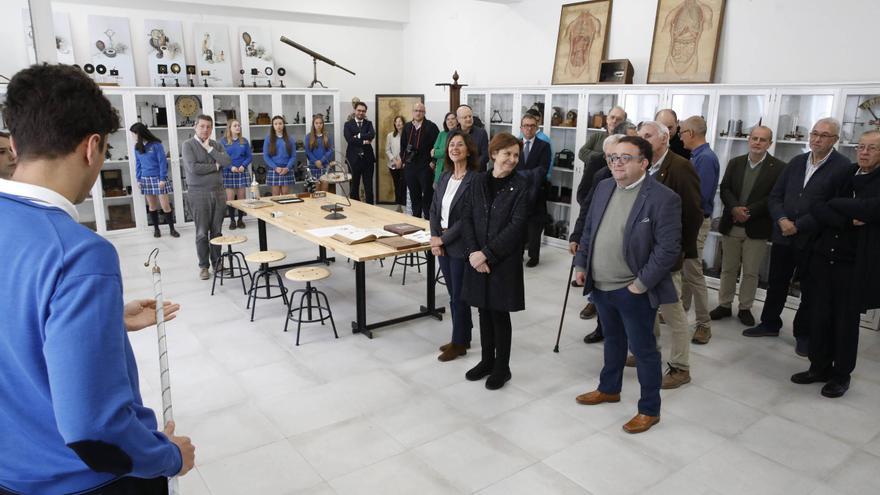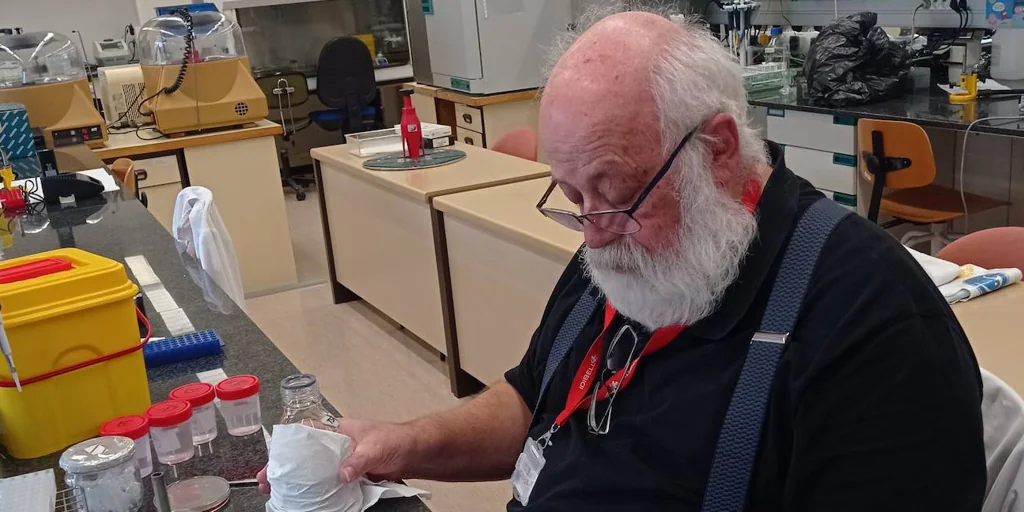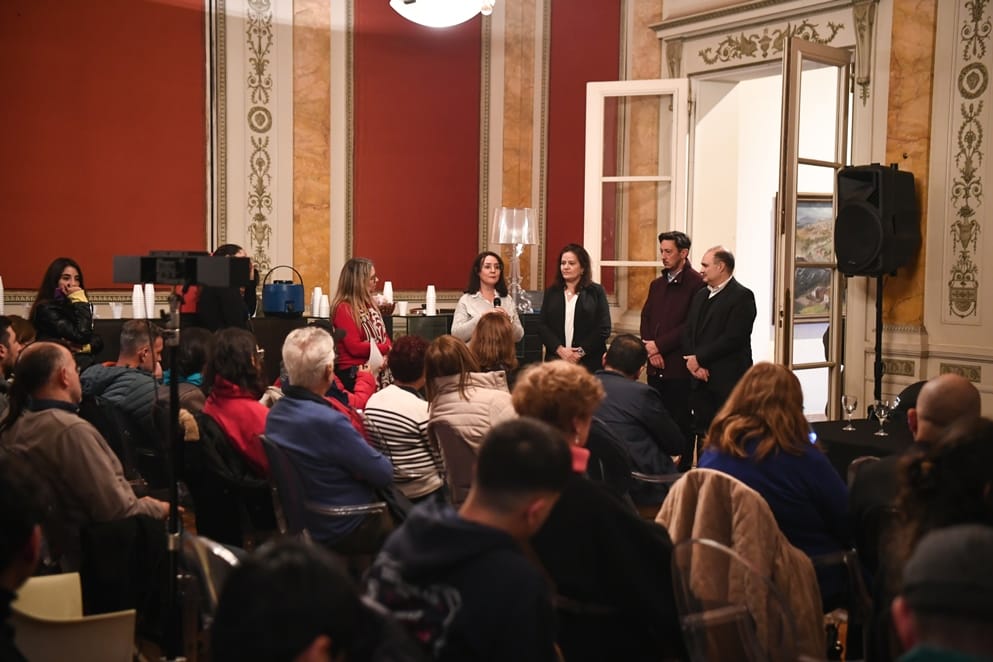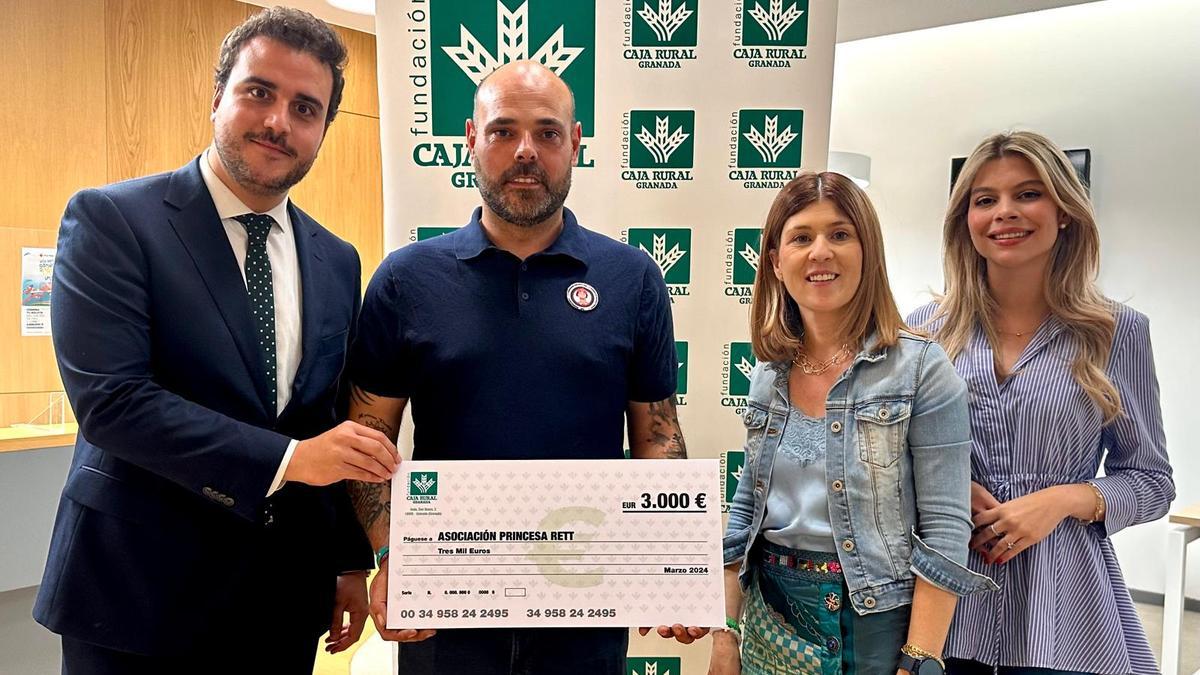The Science Museum is on the first floor of the Inmaculada School. This idea crystallized on Monday with the launch of an “exciting” project, in the words of the center’s director, Arancha Vega. Vega added that the more than 300 pieces that make up the collection represent “an important step in the commitment to preserving and disseminating scientific knowledge.” They range from a Ramon y Cajal microtome to Geisler tubes, through hydraulic pumps or a “Contessa Nettle” camera, like the one demonstrated by student Pelayo Bueno to those present, who included the city’s mayor, Carmen Morrón.
72
Arancha Vega praised the “documentation and classification” work during which the exhibition was assembled, much of which was used with machinery dating back to the late 19th and early 20th centuries. “This valuable collection will serve as a source of inspiration and learning for new generations,” stressed the director of La Inmaculada. Javier Valdes, chemistry and mathematics teacher, put everyone in context with a presentation in which he analyzed the school's history in its scientific aspect, with the laboratory being the centre. “There were those who had been concerned since 1892 (the year the Treasury of Physics and Natural History opened) about the care and preservation of the objects,” said Valdés, who admitted that the catalogs were key to learning about the machines and preparing for the exhibition. “They have the virtue of being very visual,” said the teacher. There are electrical, static, fluid, optics and miscellaneous pieces with room for communications or cinematography. Javier Valdés, who thanked Father Patak for his interest in preserving the optics and photography part, praised: “Things have been lost, but what is extraordinary is everything that has been preserved.”
Valdes noted that the use of the laboratory declined in the 1980s due to a decrease in the presence of Jesuits in schools and changes in educational laws. In the 2004-2005 academic year, third-year ESO Curriculum Diversification Group students carried out the first cleaning and selection of all materials found in the old school laboratories. Rosa Tejero, professor of biology, took on the project to coordinate the launch of the new museum. “We are in a time of great technological progress without realizing that the origins come from the work of scientists,” said Tejero, who has been calling for the “dissemination” of this “legacy” left by the Inmaculada School for more than a year.
A group of fourth-year ESO students explained the different parts of the museum to the group. Among the participants were José Manuel Urrea, Dean of the Official College of Physicists, and José Carlos Rubio, Dean of the Official College of Chemists of Asturias and León. Student Tristan Teran excitedly showed off a sparkling tube. “It's my favorite thing,” he admitted. Carmen Morrion, a former student of Inmaculada, called the project a “marvel” and praised the “Jovellanista spirit.” “How proud Jovellanos would be,” the advisor stressed, expressing his hope that this museum will be an opportunity to “open the door to researchers” who want to learn about the scientific history of the city through the Jesuit Center. The meeting also witnessed the tribute to Carlos Valdes, who was a teacher and head of studies at the school. He received a gold badge from Arancha Vega on a day that highlighted Inmaculada's connection to its scientific past.





